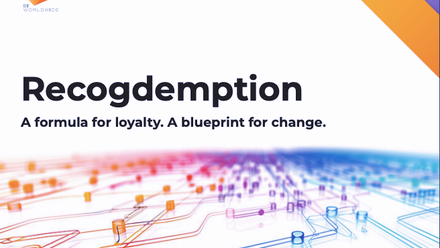The crucial role of pay transparency and how it can enhance employee experience
Pay transparency has become a significant talking point for many UK companies, even those not directly affected by the incoming European pay transparency legislation.
This shift is driven by a growing recognition of the benefits that transparent pay practices can bring, including enhanced employee trust, improved talent acquisition and a reduction in employee turnover.
With the UK experiencing its own internal pressures to address gender pay gaps, and the influence of international standards and practice, many organisations are proactively adopting pay transparency measures. As employees and candidates increasingly demand fairness and accountability, companies are finding that embracing pay transparency can be a strategic advantage, enabling them to stay competitive in a rapidly evolving market.
Pay transparency encompasses the open sharing of information about reward practices, salary ranges, and the criteria for pay increases. It can offer numerous benefits that significantly enhance workplace culture and employee satisfaction.
Where is the evidence that pay transparency improves the employee experience?
First, pay transparency increases trust between employees and those in more senior positions. When employees have a clear understanding of how their pay and that of others is determined, it reduces resentment that might arise from perceived pay inequities. Trust, in turn, leads to higher morale and engagement.
In fact, in one study, management transparency was found to be the most significant predictor of employee happiness.
Second, pay transparency contributes to a more inclusive and fairer workplace. By openly sharing pay data, companies can identify, and address pay disparities that individuals or groups may be experiencing. This proactive approach not only helps correct existing inequalities but also prevents future disparities. For employees, knowing that their employer is committed to pay transparency and pay equity can significantly enhance their sense of belonging and loyalty to the organisation.
Third, pay transparency enhances recruitment practices. Candidates are increasingly looking for employers who are open about their pay practices. Glassdoor found that 75% of job hunters would be more likely to apply for a position that includes a salary range on the job listing.
Last, for existing employees, knowing that pay practices are fair and transparent has been shown to increase retention through a greater sense of security and commitment to the organisation. Payscale’s Retention Report found that the likelihood that employees will seek a new job decreases as pay transparency in an organisation increases.
Introducing pay transparency requires a strategic and thoughtful approach to ensure it positively impacts the employee experience.
Decide on the level of pay transparency
There are different levels of pay transparency ranging from individual employees knowing only what they are paid, to full transparency of all salaries in an organisation.
Organisations need to make decisions as to how far they are going to go with pay transparency. Are they going to do the minimum to comply with the legislation in each location or are they going to go above and beyond the legal requirements? Work out which level is most appropriate for your organisation to start with.
Get your house in order
Before making pay data public, review compensation data thoroughly to ensure accuracy and fairness, and correct any disparities. At the very core of pay transparency, and pay fairness, is the ability to look across the organisation at the landscape of jobs, pay and reward, to make comparisons between the compensation for similar roles.
And here’s the rub. For pay transparency to be truly fair and equal, job structures and frameworks need to be updated and in a fit state to show any disparities or inaccuracies across a job architecture or job families. If they are out of date or non-existent, then an organisation is not going to have a clear picture of pay, grading or job levels.
However, for many companies the job framework landscape is still very chaotic, with individual teams and departments having their own job structures, titles and pay scales in place, with little governance to manage and align.
Agile approach for the benefit of all
With new skills, ways of working and emerging tech, gone are the days of static job descriptions and job family hierarchies. Instead, organisations need to be more agile in their approach and be able to change and adapt at pace. Pay doesn’t stand still and neither should pay and reward strategies and approaches.
In summary, pay transparency supports building trust, promoting equity, enhancing retention and attracting talent. Not only is it beneficial for employees and candidates, but also strategically advantageous for organisations – ensuring you have agile and robust frameworks in place will be key to transparent pay practices.
Supplied by REBA Associate Member, RoleMapper
RoleMapper is an AI-powered job data transformation and management platform.








